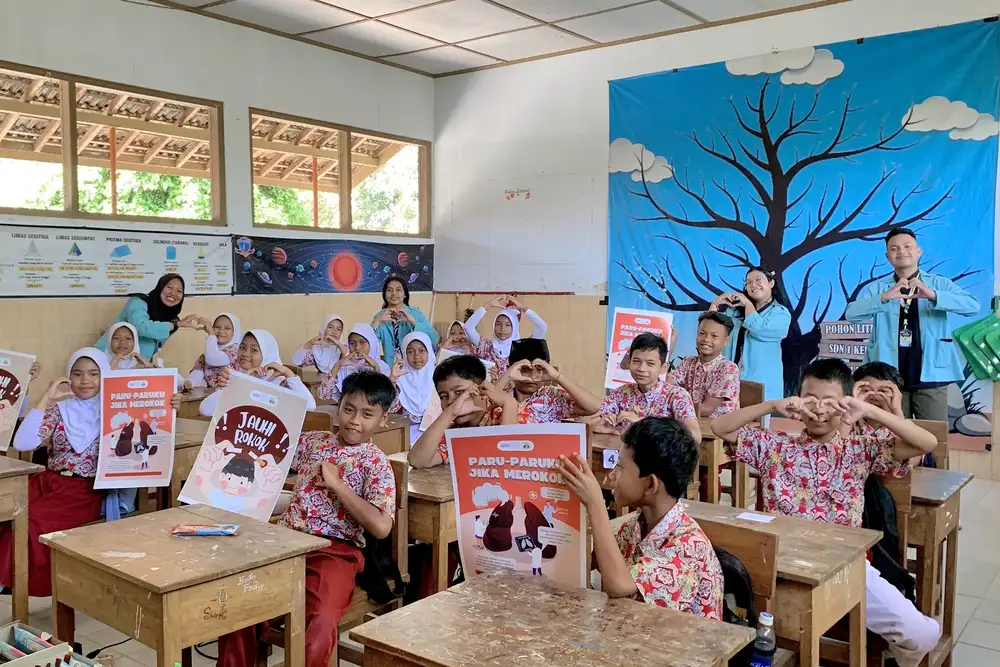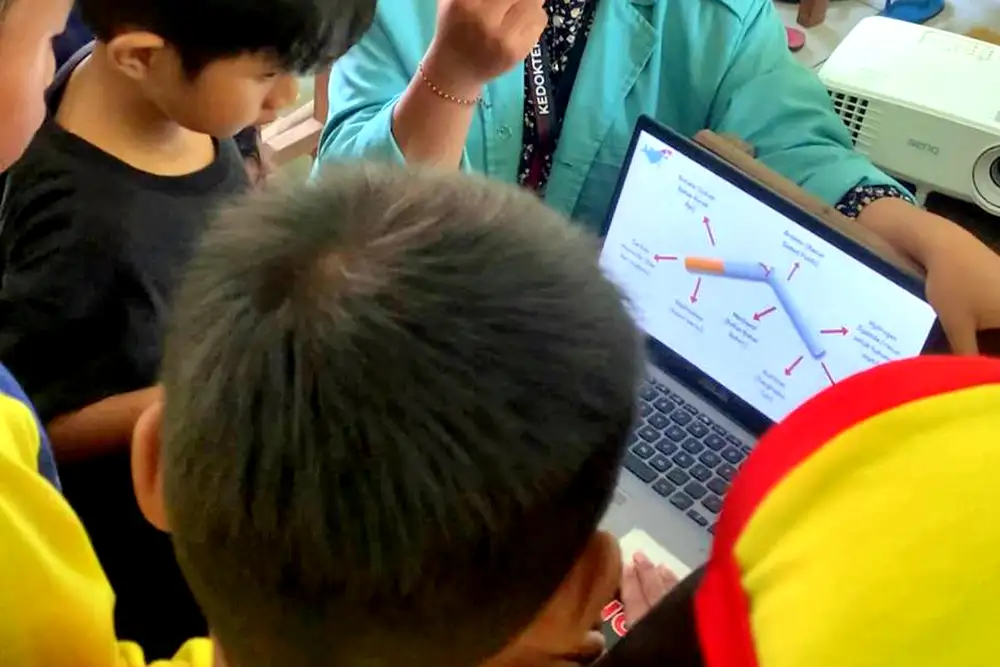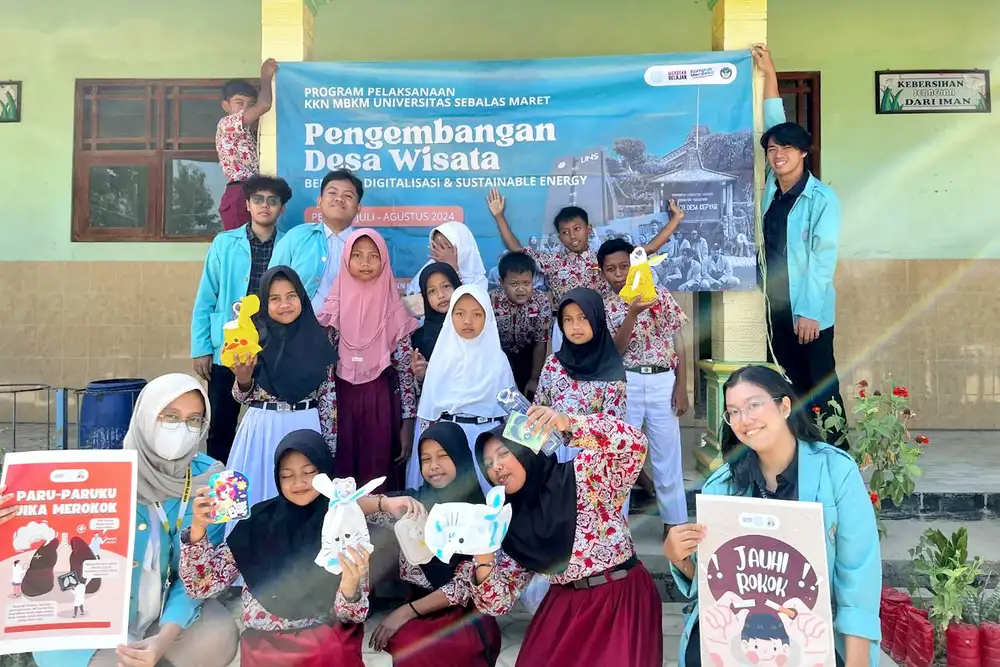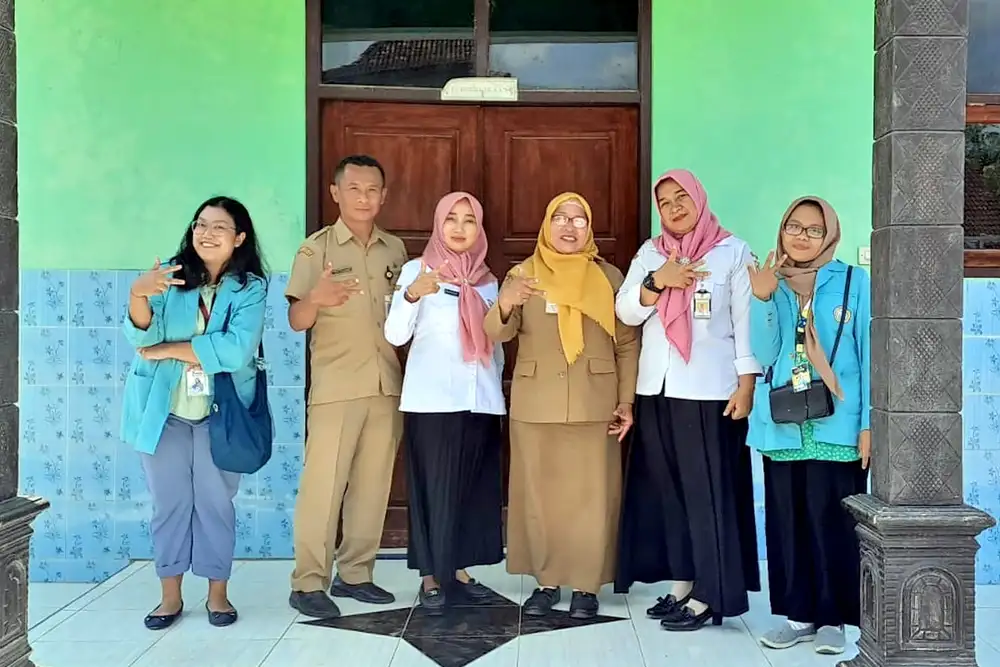Medical Students Take Action Against Tobacco Threat

Recent data reveal that one in ten children aged 10-18 in Indonesia are already active smokers, placing the country at the top of the global youth smoking rate. Despite the government’s ban on the sale of tobacco products to children under 18, the 2019 Global Youth Tobacco Survey found that more than 40 percent of students aged 13-15 have used tobacco products. This fact further underscores the urgency of further action to protect the younger generation.
Widespread tobacco use among children and adolescents puts their futures at great risk. Tobacco is the second largest risk factor for premature death and disability in Indonesia. Every year, more than 600,000 deaths in Indonesia are caused by exposure to secondhand smoke, and 28 percent of them are children. In addition, the cost of health care for diseases caused by smoking continues to burden the national budget.
Amid growing concerns over the negative impacts of tobacco on the health of young people in Indonesia, in July-August 2024, the Community Service Program (KKN) 278 Kepyar Village team consisting of 5 students from the Medical study program, Faculty of Medicine, Universitas Sebelas Maret visited 3 Elementary Schools (SD) in Kepyar Village, Purwantoro District, Wonogiri Regency to conduct socialization on the dangers of cigarettes. The socialization activities were carried out in an interesting way, such as introducing the ingredients that cause the dangers of cigarettes, showing short films, and conducting mini experiments on how the lungs work and the effects of cigarettes on the lungs.
 |
 |
 |
(Swipe for the next photos)
In this early education program, the Medical students explained the ingredients of cigarettes that are harmful to the body in a unique and interactive way, one of which was by providing fun facts about these ingredients. For example, the material introduced butane which is an ingredient in matches. In addition, there is also methanol which is a rocket fuel. With this strategy, it is hoped that children will become more aware of the dangers of cigarettes.
After the presentation of the material, a mini experiment was also carried out on how the lungs work and the effects of cigarettes on the lungs. This experiment used easily available materials such as bottles, cotton, and cigarettes. During class, the children paid close attention with great enthusiasm.
Angelina, one of the students involved in the program, called for the importance of the role of young people from the most basic education level in breaking the chain of tobacco use. "Although they are still young, it is important to provide education so that when they live their teenage lives, they are not influenced by cigarette use. In my opinion, they must also dare to break the chain of tobacco, not extend it," she said.
During its implementation, the team in Purwantoro District also continued the implementation of Smoke-Free Areas in 3 Elementary Schools that were the targets of this program. Angelina also said that in fact the United Nations Children's Fund (UNICEF) and the Indonesian Youth Council for Tobacco Control (IYCTC) have also been actively advocating for the implementation of Smoke-Free Areas (KTR) throughout Indonesia. This step was driven by the awareness of the importance of creating a healthy, smoke-free environment, especially amidst predictions about the dominance of the productive age population in Indonesia in the next few years.
Public Relation of FK UNS
 bahasa indonesia
bahasa indonesia 



